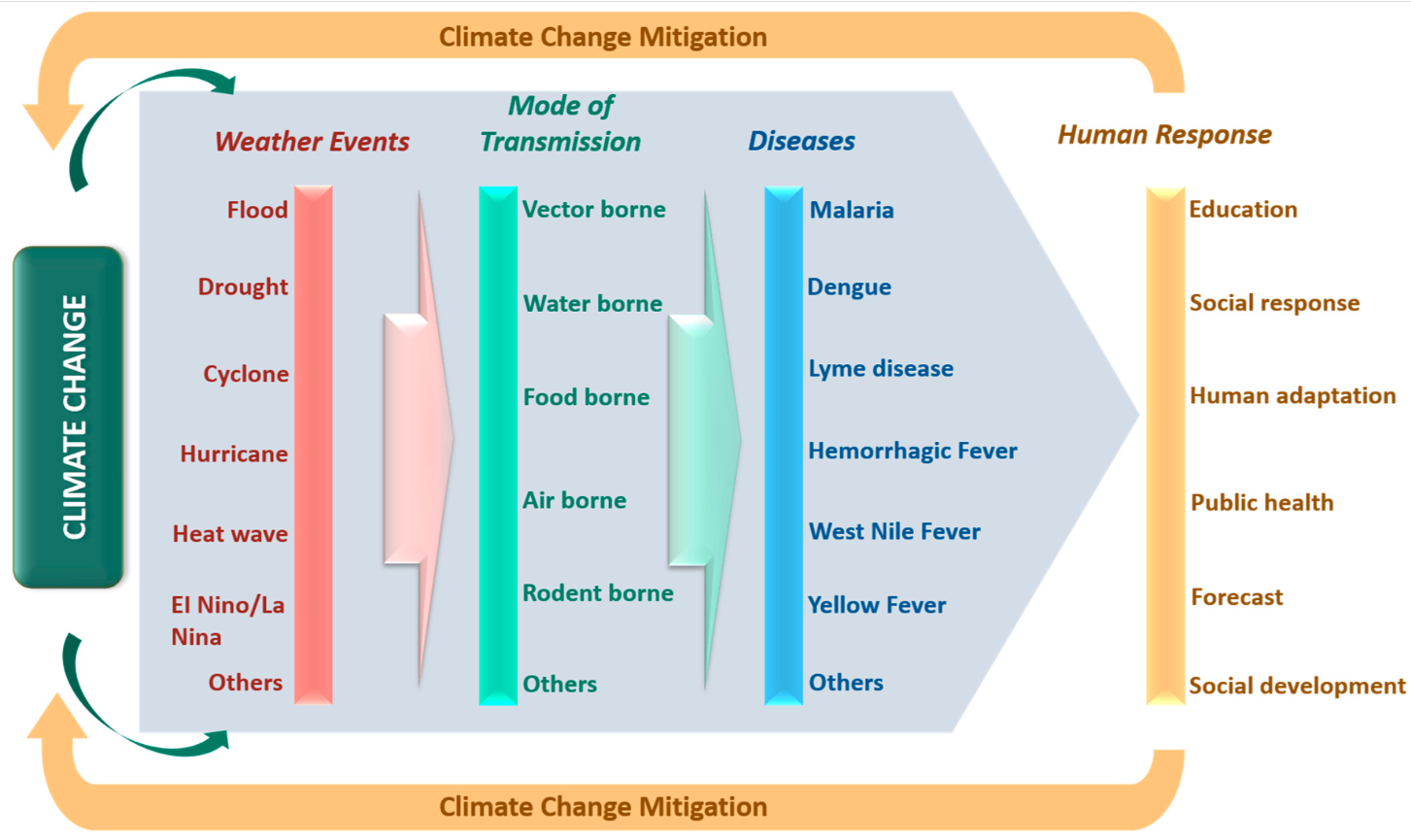
Storm Surge, Wildfires, and Pandemics: How Climate Change Is Increasing the Risk of Zoonotic Disease Outbreaks
The COVID-19 outbreak is a public health crisis. But it is also an example of another natural disaster made more severe and more likely by unsustainable resource and energy use practices.
As we all self-quarantine and dutifully follow “social distance” protocol for a fourth week in order to protect ourselves and others from COVID-19, one could conclude from our sluggish response and lack of preparedness that this pandemic could not have been predicted. Sadly, this could not be further from the truth. For years epidemiologists and public health experts have warned us that the majority of countries are not ready for a global outbreak, and that it was not a question of if but when a deadly pandemic would occur.
Of course, bacterial and viral outbreaks have occurred periodically throughout human history and no matter what steps we take today, we will always have to contend with future outbreaks of novel pathogens. However, the severity and frequency of these outbreaks can be influenced by our actions, and right now unrestrained carbon emissions are making us more vulnerable than ever to pathogens like COVID-19.
To understand this relationship, it is important to consider one of the primary causes of outbreaks like COVID-19. Many of the most threatening outbreaks of recent years (SARS, Ebola, MERS, swine flu, and COVID-19) were caused by zoonotic viruses—viruses that originated in other animal species, then successfully infected and replicated in a human host.
These “spillover events” expose humans to an unfamiliar virus for which we have very little immunity. If that virus is then able to spread between humans, it can easily trigger a widespread epidemic or, in the case of swine flu and COVID-19, a global pandemic. Climate change increases the likelihood of these spillover events for two main reasons: changes in the geographic and density distribution of species and changes in viral load and infection rate.

To varying degrees, climate change is altering patterns of rainfall and average temperature in every region of the world. These changes can have profound effects on the delicate equilibrium of ecosystems. Some species may benefit from these changes and multiply, increasing in density and/or geographical range.
Increased density means that pathogens carried by pre-adapted species will have greater opportunity to spread within the population, and increased range means that zoonoses will be more likely to “spill over” to humans or another intermediary species. On the other hand, some species may be less well-adapted to these changes and will be less able to compete for resources. The chronic stress and poor welfare caused by increased competition could lead to a higher viral load and rate of disease within the population, and therefore a higher risk of transmission to other species.
Once a virus enters a human host—usually through involuntary ingestion, inhalation, or absorption of the host animal’s biological material—climate change can significantly affect that pathogen’s ability to spread within the human population. For one, people tend to gather in confined indoor spaces during more extreme weather, increasing the likelihood of transmission.
Our immune systems are also impacted by weather, so being exposed to more extreme conditions than we are used to can make us more susceptible to contracting a disease to which we are exposed. There is also evidence that temperature, humidity, and sunlight can impact how long viruses are able to survive outside of the body, for example on frequently touched surfaces. Warmer weather conditions can cause an increase in disease vectors, such as invertebrates capable of transmitting viruses or bacteria between humans or other animals (e.g. ticks spreading Lyme disease or mosquitos spreading malaria).
Right now, we most urgently need to look at COVID-19 as a public health crisis, the solutions for which are social distancing, careful sanitization, widespread testing, access to safety equipment, and competent medical care. However, as we rebuild our faltering economy and prepare for the future, the COVID-19 outbreak needs to be recognized for what it is: another natural disaster made more severe and more likely by unsustainable resource and energy use practices. The only way to reduce the climatological disruption of ecosystems, and the subsequent spreading of pathogens, is to reduce global carbon emissions and rapidly halt catastrophic climate change.
More from the Kleinman Center:
- Policy Digest: Wrong About Urbanization?
Oscar Serpell
Deputy DirectorOscar Serpell oversees all student programming, alumni engagement, faculty and student grants, and visiting scholars. He is also a researcher, writer, and policy analyst working on research initiatives with students and Center partners.

